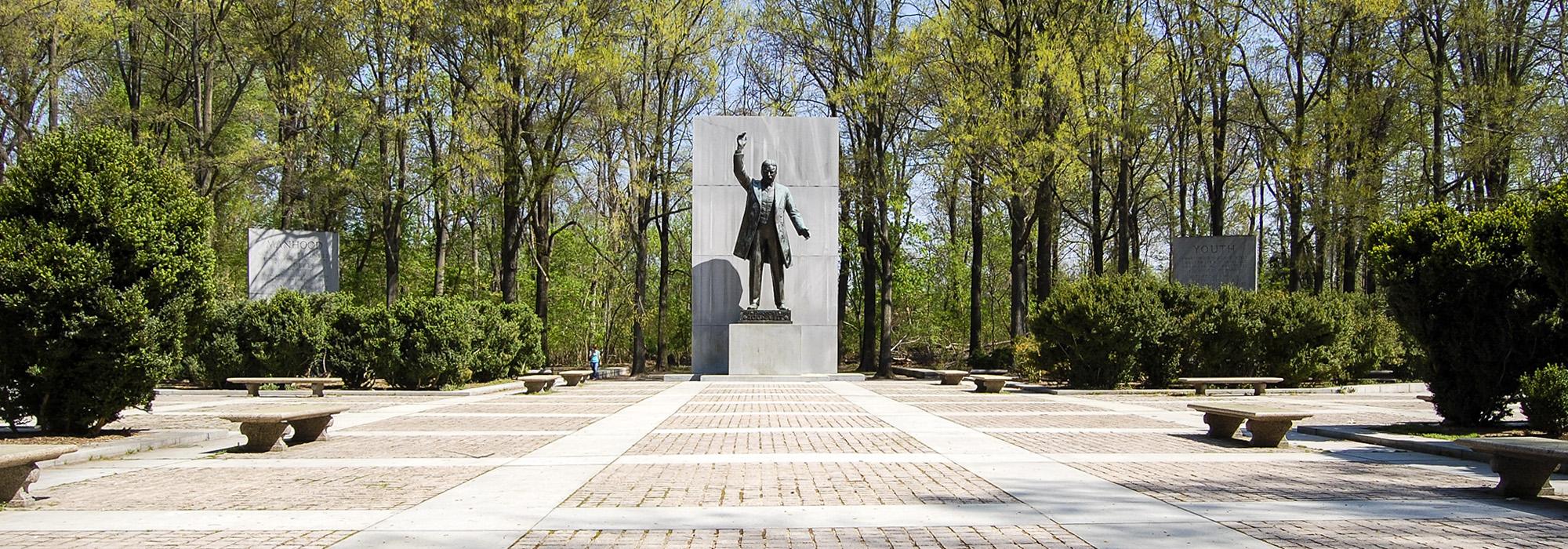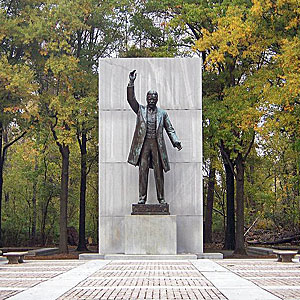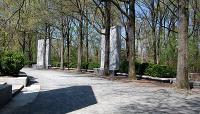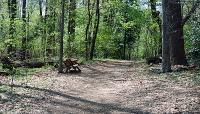Landscape Information
Dedicated to America’s 26th President, this 91-acre, wooded island, located in the Potomac River between Arlington Memorial Bridge and Key Bridge is navigable by a trail system (both earthen paths and boardwalks) that affords glimpses of the surrounding urban landscape beyond a dense screen of native hardwood trees and shrubs. First used by Native peoples as a fishing village, the island was later granted to Lord Baltimore by King Charles I, owned by a Caribbean sea captain, and inhabited by the Mason family, who built a brick mansion and cultivated extensive gardens (1792-1833). During the Civil War the 1st United States Colored Troops trained on the island at Camp Greene, and once deployed, the camp was expanded to include additional infrastructure (e.g. barracks and hospitals, now lost). From May 1864 to June 1865 Camp Greene served as a contraband camp, enclaves where freed and self-emancipated African Americans lived before and in the aftermath of the Emancipation Proclamation.
In 1932, The Theodore Roosevelt Memorial Association purchased the island with the intent of creating a memorial to the American political leader and renowned conservationist. The island was re-naturalized into mature woodland through the efforts of landscape architect Frederick Law Olmsted, Jr., and the Civilian Conservation Corps. Architect Eric Gugler sited the memorial at the island’s northern end. He designed an oval space with upper and lower terraces planted densely with boxwood and surrounded by a moat and a double hedge of willow oak trees. The grove-like quality creates opportunities for solitude and contemplation in contrast to the otherwise formal memorial. A seventeen-foot bronze statue of the former president designed by sculptor Paul Manship is prominently featured as the memorial’s centerpiece, while four 21-foot granite stelae are inscribed with quotations expressing Roosevelt’s philosophy on youth, nature, and the nation.
This wildlife sanctuary serves as a living memorial to Roosevelt’s leadership in land and resource conservation. Managed by the National Park Service, it was listed in the National Register of Historic Places in 1966 and dedicated in 1967.
















